Get Your Copilot

Create Chatbot For Food Processing
Discover how our innovative text-messaging chatbot revolutionizes food processing operations through automated assistance, providing reliable data for production management.
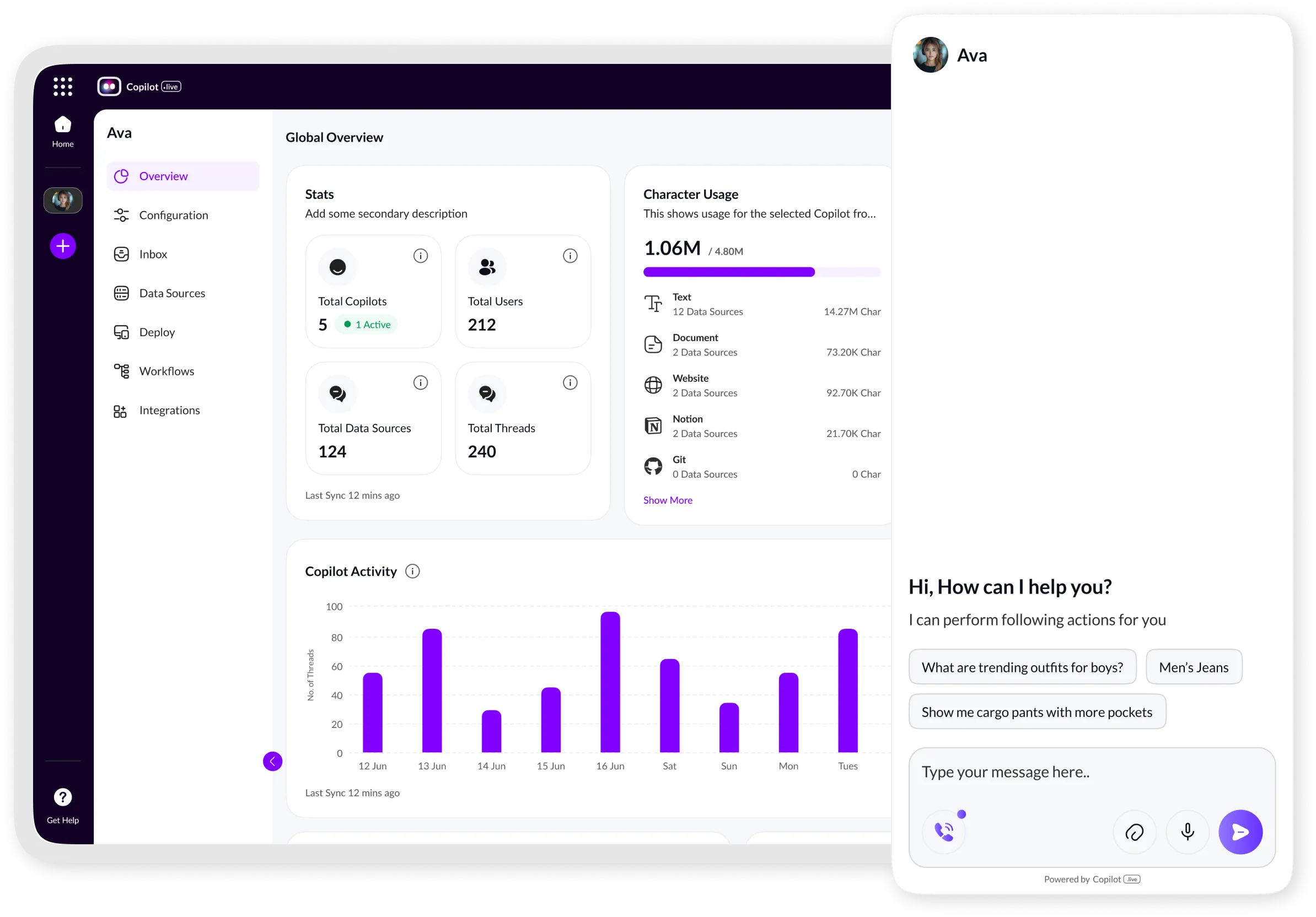
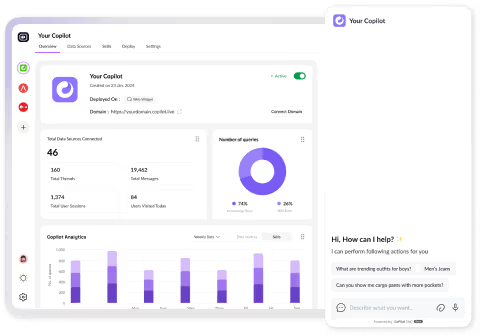
Create Chatbot For Food Processing
Discover how our innovative text-messaging chatbot revolutionizes food processing operations through automated assistance, providing reliable data for production management.


Build an AI assistant in 3 minutes
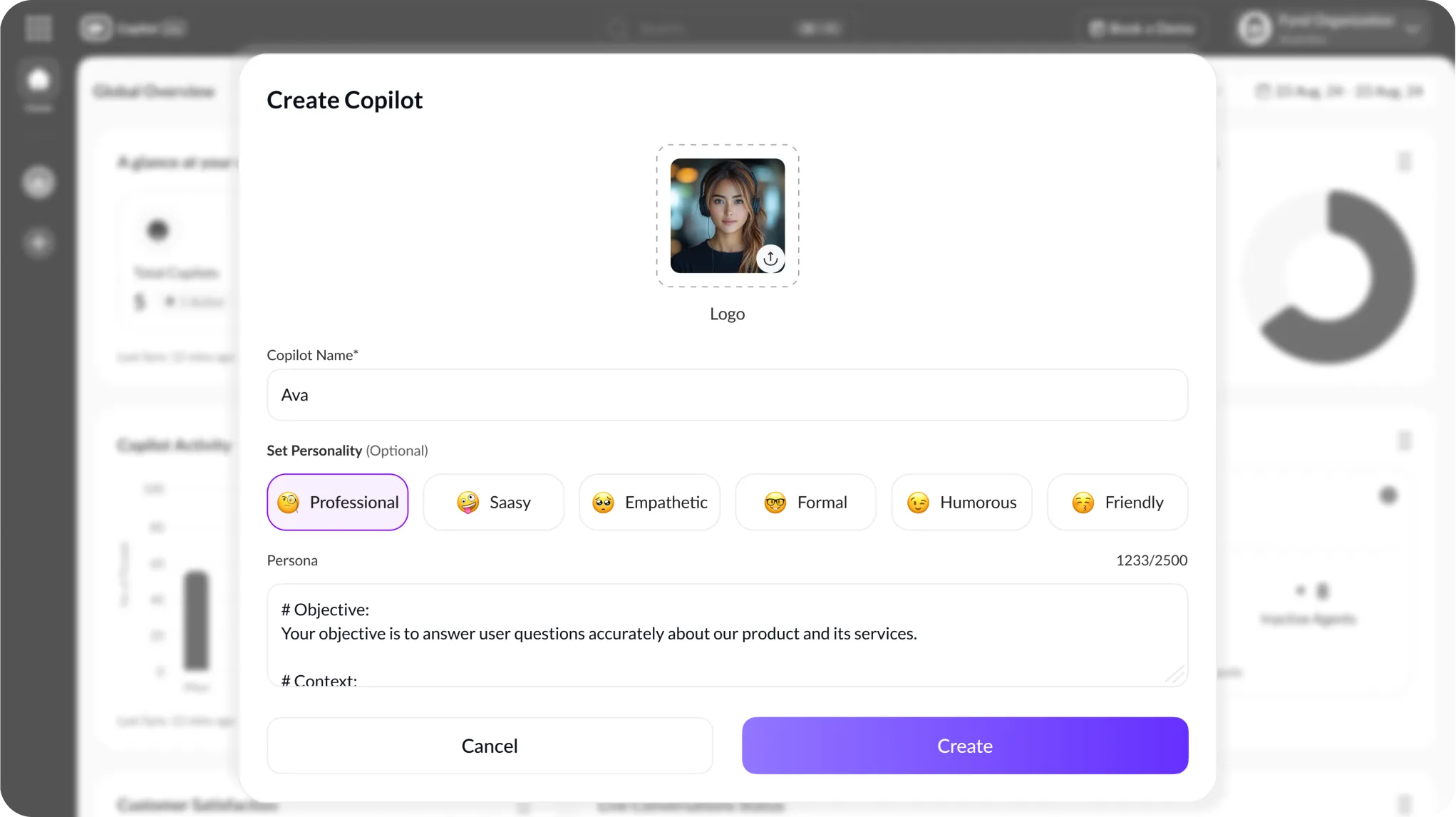
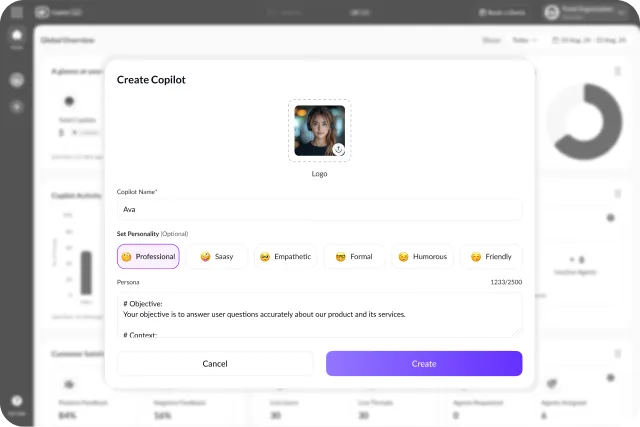

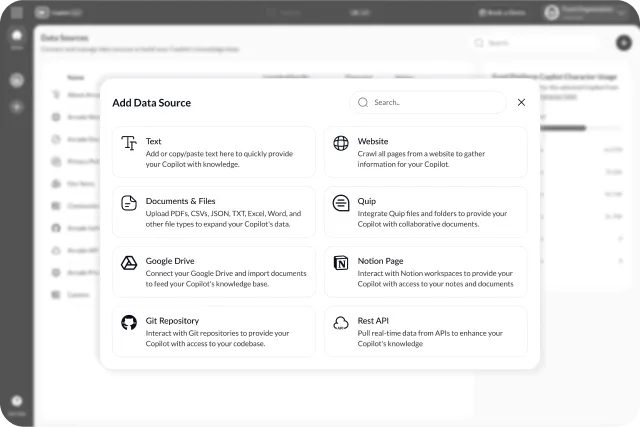

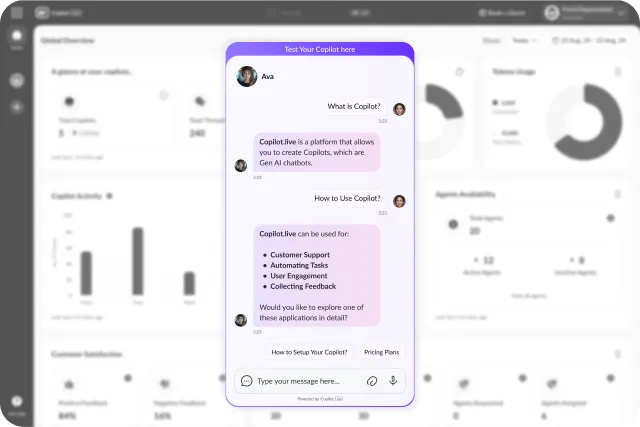
Creating A Food Processing Chatbot With Copilot.Live Four Simplified Steps
Define Objectives
Clearly outline the goals of the chatbot, such as providing information about food processing, optimizing production efficiency, or assisting users with inquiries related to food safety and regulations.
Data Gathering
Collect relevant data about food processing, including information on production techniques, ingredient sourcing, quality control, and common user queries. This data will be used to train the chatbot model.
Model Training
Utilize Copilot.Live AI capabilities to train a natural language processing (NLP) model using the collected data. Fine-tune the model to understand food processing-specific terminology and user intents.
Chatbot Development
Develop the chatbot interface using Copilot.Live tools, incorporating features like natural language understanding and response generation. Test the chatbot thoroughly to ensure it effectively meets the defined objectives.


Empowering Food Processing Operations
Deploy into our comprehensive guide to empower food processing operations by creating a Cook Assist chatbot by Copilot.Live In today's rapidly evolving technological landscape, chatbots have emerged as invaluable tools for enhancing communication, data collection, and decision-making processes in various industries, including food processing. This guide offers a clear and concise roadmap consisting of four essential steps to help you harness the potential of chatbot technology for food processing management.
Whether you're a food processing professional, manufacturer, or quality control specialist, this guide will provide the necessary insights and resources to develop your chatbot seamlessly. Join us as we explore the intersection of artificial intelligence and food processing management to drive efficiency and quality in our food production processes.
Why Choose Copilot.Live For Your Food Processing Chatbot Need?
Natural Language Understanding (NLU)
Our chatbot employs advanced NLU algorithms to comprehend user queries accurately, enabling seamless interaction. It interprets user intent, extracts relevant information, and delivers precise responses through sophisticated language processing, enhancing user satisfaction and productivity in food processing tasks.
Integration With ERP Systems
Seamlessly integrated with Enterprise Resource Planning (ERP) systems, our chatbot leverages operational data to provide context-aware insights and recommendations. By accessing real-time production data, inventory levels, and supply chain information, the chatbot facilitates efficient decision-making and resource management in food processing operations.
Personalization Capabilities
Tailored to individual user preferences and requirements, our chatbot offers personalized experiences through customizable settings and user profiles. Adapting responses and recommendations based on user history and preferences enhances engagement and fosters deeper connections between users and food processing solutions.
Integration With Enterprise Resource Planning (ERP) Systems
Our chatbot seamlessly integrates with ERP platforms, enabling food processing professionals to access operational data and perform real-time analysis within the chat interface. By leveraging ERP capabilities, users can streamline production processes, optimize inventory management, and ensure compliance with industry regulations, enhancing efficiency and profitability in food processing operations.


Optimize Food Processing With Our Chatbot Solution
Explore a groundbreaking solution for food processing management that transcends traditional methods. Our innovative chatbot offers a seamless way to oversee and enhance production processes, leveraging advanced AI and natural language processing technologies. Designed to empower food processing professionals, our chatbot streamlines data collection, analysis, and decision-making processes. Say goodbye to manual data entry and hello to real-time insights. Our chatbot enables efficient interaction with production data, from inventory management to quality control and compliance tracking.
Whether you're a food manufacturer, processor, or quality assurance specialist, our solution provides an intuitive platform to optimize your food processing practices. Join us in embracing the future of food processing management, where technology meets efficiency. Unleash the power of data-driven decision-making and unlock new possibilities for streamlining and enhancing your food production processes.
Key Features & Benefits Of Copilot.Live Chatbot For Food Processing
Unlock the full potential of food processing management with Copilot.Live Chatbot. Integrate advanced AI capabilities into your workflow to streamline data collection, analysis, and decision-making processes.
Customizable Reporting
Our chatbot offers customizable reporting capabilities, allowing users to generate tailored reports based on specific parameters such as production efficiency, quality metrics, and compliance status. This feature empowers food processing professionals to extract actionable insights and make informed decisions to optimize production processes.
Multi-Language Support
Our chatbot supports multiple languages, enabling users from diverse regions and linguistic backgrounds to interact with the platform effortlessly. This feature promotes inclusivity and accessibility, ensuring that food processing insights are accessible to a global audience, regardless of language barriers.
Integration With ERP Systems
Seamlessly integrates our chatbot with Enterprise Resource Planning (ERP) systems to access operational data and facilitate real-time analysis related to food processing management. By overlaying chatbot-generated insights onto ERP dashboards, users gain comprehensive visibility into production processes, enabling more informed decision-making and resource allocation.
Collaborative Workflows
Foster collaboration among food processing stakeholders by facilitating shared access and collaborative workflows within the chatbot platform. Enable teams to collaborate in real-time, share insights, and coordinate actions, enhancing efficiency and effectiveness in food processing operations while promoting knowledge exchange and collective decision-making.
Launch Your Chatbot For Food Processing In No Time
Natural Language Processing (NLP)
Natural Language Processing (NLP) is a branch of artificial intelligence (AI) that focuses on enabling computers to understand, interpret, and generate human language in a meaningful and contextually relevant way. It involves tokenization, syntactic parsing, semantic analysis, and named entity recognition to process and analyze text data. NLP algorithms allow chatbots to comprehend user input, extract critical information, and generate appropriate responses, facilitating effective communication between humans and machines.
Customizable Workflows
Customizable workflows empower users to tailor processes according to their needs and preferences. With this feature, users can define and modify a workflow's sequence of steps, actions, and conditions to align with their unique business requirements. It enables flexibility, efficiency, and adaptability in managing tasks, projects, or operations. By allowing customization, users can optimize workflows to streamline operations, improve productivity, and achieve better outcomes. Whether automating repetitive tasks, routing approvals, or orchestrating complex business processes, customizable workflows provide the flexibility and control necessary to meet diverse organizational needs effectively.
Data Visualization Tools
Data visualization tools are software applications that enable users to create visual representations of data, such as charts, graphs, and maps. These tools offer a variety of features to manipulate and present data in a visually appealing and informative manner. With intuitive interfaces and a wide range of visualization options, users can explore data, identify patterns, and communicate insights effectively. Some popular data visualization tools include Tableau, Power BI, and Google Data Studio. These tools often support interactive features, allowing users to drill down into data, apply filters, and customize visualizations to convey complex information clearly and engagingly.
Task Automation
Task automation involves streamlining and optimizing repetitive processes by leveraging technology to perform them automatically, without human intervention. By employing software tools, scripts, or workflows, tasks such as data entry, file management, report generation, and more can be automated, saving time, reducing errors, and increasing productivity. Automation can be achieved through various means, including using specialized software applications, implementing scripting languages like Python or JavaScript, or utilizing robotic process automation (RPA) tools. Overall, task automation enables organizations to focus on high-value activities, improve efficiency, and achieve greater scalability in their operations.
Geographic Information System (GIS) Integration
Geographic Information System (GIS) integration allows users to seamlessly incorporate spatial data and maps into their workflows. By integrating GIS capabilities, users can visualize geospatial data, analyze spatial relationships, and derive insights from geographic information. This integration enables users to overlay maps with various data layers, perform spatial analysis, generate geospatial visualizations, and make informed decisions based on geographic context. GIS integration empowers users to leverage geospatial data within their applications or systems, whether for environmental monitoring, urban planning, natural resource management, or disaster response.
Machine Learning Algorithms
Machine learning algorithms are computational methods that enable computers to learn patterns and relationships from data without being explicitly programmed. These algorithms allow systems to improve their performance on a task as they are exposed to more data over time. Various types of machine learning algorithms exist, including supervised learning, unsupervised learning, and reinforcement learning. Supervised learning algorithms learn from labeled data, making predictions or classifications based on input-output pairs. Unsupervised learning algorithms discover patterns in unlabeled data, identifying hidden structures or relationships. Reinforcement learning algorithms learn through trial and error, receiving feedback from the environment to improve decision-making over time.
User Authentication And Security
User authentication and security refer to the processes and mechanisms implemented to verify the identity of users accessing a system or application and to ensure that their data and interactions are protected from unauthorized access or malicious activities. This includes various methods such as password authentication, multi-factor authentication (MFA), biometric authentication, and cryptographic protocols. Security measures such as encryption, access control, and audit logging are implemented to safeguard user data and prevent unauthorized access or data breaches. By employing robust authentication and security practices, organizations can protect sensitive information, maintain user privacy, and mitigate cybersecurity risks effectively.
Knowledge Base Management
Knowledge-based management involves the organization, storage, retrieval, and sharing of information. It includes creating, updating, and managing a repository of knowledge assets such as documents, articles, FAQs, and tutorials. Knowledge-based management systems often feature categorization, tagging, search functionality, and version control to ensure that information is easily accessible and up-to-date. These systems facilitate efficient knowledge sharing among employees, improve problem-solving capabilities, and enhance customer support by providing quick access to relevant information. Additionally, analytics tools may be integrated to track usage patterns and identify areas for improvement in knowledge management practices. Effective knowledge-base management is essential for promoting collaboration, fostering innovation, and maximizing organizational productivity.
Mobile Accessibility
Mobile accessibility refers to the ability of digital content, applications, and services to be easily accessed and used by individuals with disabilities on mobile devices such as smartphones and tablets. It ensures that mobile interfaces, functionalities, and content are designed and developed to accommodate diverse users, including those with visual, auditory, motor, or cognitive impairments. Mobile accessibility features may include options for screen readers, magnification, voice control, alternative input methods, captioning, and tactile feedback. By prioritizing mobile accessibility, organizations can ensure that their mobile applications and content are inclusive and usable by everyone, regardless of their abilities or disabilities. This helps to enhance user experience, reach a broader audience, and promote digital equity and inclusion. Additionally, mobile accessibility compliance with accessibility standards such as the Web Content Accessibility Guidelines (WCAG) can help organizations meet legal requirements and avoid potential discrimination issues.
Scalability And Performance
Scalability and performance are crucial for any software system, including chatbots for food processing applications. Scalability refers to the ability of the system to handle increasing workloads and growing user demands without sacrificing performance. It involves designing the system architecture and infrastructure to allow seamless expansion and resource allocation as needed. Performance, on the other hand, relates to the efficiency and speed of the system in processing user requests and delivering responses. The chatbot can accommodate many users and handle complex tasks without experiencing downtime or performance degradation by ensuring scalability. Performance optimizations, such as efficient algorithms, caching mechanisms, and parallel processing, contribute to faster response times and improved user experience. Together, scalability and performance enhancements enable the chatbot to meet the evolving needs of food processing professionals and stakeholders, even as user populations and data volumes increase.
Compliance Monitoring
Compliance monitoring ensures that the chatbot for food processing applications adheres to relevant regulations, standards, and policies governing food safety, quality assurance, and industry-specific requirements. This feature includes functionalities to track and audit user interactions, data access, and system activities to verify compliance with food safety regulations and organizational policies. Additionally, compliance monitoring may involve implementing data encryption, access controls, and audit trails to protect sensitive information and demonstrate regulatory compliance during audits or inspections. By integrating compliance monitoring capabilities into the chatbot platform, food processing organizations can mitigate risks, maintain regulatory compliance, and uphold trust with stakeholders by demonstrating their commitment to food safety and quality standards.
Continuous Improvement
Continuous improvement is the iterative process of enhancing the chatbot's functionality, performance, and user experience over time. This feature entails mechanisms for collecting user feedback, analyzing usage data, and identifying areas for enhancement or optimization. Through techniques such as A/B testing, user surveys, and analytics, continuous improvement enables food processing chatbots to adapt to evolving user needs, preferences, and industry trends. By systematically incorporating user feedback and iteratively refining algorithms, Natural Language Processing (NLP) models, and user interfaces, organizations can ensure that their chatbots remain effective, efficient, and valuable tools for supporting food processing operations and engaging stakeholders. Continuous improvement fosters agility and innovation, enabling food processing chatbots to evolve alongside technological advancements and changing business requirements, maximizing their long-term impact and value.
Quality Control Monitoring
Quality control monitoring allows the chatbot to oversee various stages of the food processing workflow to ensure that products meet specified quality standards. The chatbot can monitor real-time parameters such as temperature, humidity, pH levels, and ingredient proportions. If any deviations from the predefined quality thresholds are detected, the chatbot can alert relevant personnel and provide recommendations for corrective actions. By continuously monitoring quality parameters, the chatbot helps maintain consistency and compliance with regulatory requirements, ultimately improving product quality and customer satisfaction.
Recipe Optimization
Recipe optimization capability enables the chatbot to analyze recipes and suggest modifications to improve product quality, taste, nutritional value, or cost-effectiveness. The chatbot can leverage machine learning algorithms to analyze ingredient combinations, cooking techniques, and processing parameters based on user preferences, dietary restrictions, and market trends. By recommending optimized recipes, the chatbot assists food processing professionals in creating innovative and competitive products while maximizing resource efficiency and minimizing waste. Additionally, the chatbot can gather user feedback on recipe preferences and performance, facilitating continuous refinement and enhancement of recipe recommendations.
Advanced Reporting
Advanced reporting capabilities empower food processing chatbots to generate comprehensive and insightful reports based on user interactions, system performance, and other relevant metrics. These reports provide valuable insights into chatbot usage patterns, user engagement levels, frequently asked questions, and effectiveness in addressing user queries. By leveraging data visualization techniques and customizable reporting dashboards, food processing organizations can gain actionable insights to inform decision-making, optimize chatbot performance, and enhance user experiences. Advanced reporting also facilitates monitoring key performance indicators (KPIs), tracking progress towards business objectives, and identifying areas for improvement. With customizable report templates, real-time data updates, and export functionality, food processing chatbots with advanced reporting capabilities enable stakeholders to analyze trends, measure impact, and drive continuous improvement initiatives effectively. Advanced reporting enhances transparency, accountability, and data-driven decision-making within food processing organizations, ultimately improving operational efficiency and outcomes.


Empower Your Operations With Copilot.Live Chatbot
As you conclude your journey through our food processing chatbot solution, you've taken the first step towards revolutionizing how you manage and monitor your food processing operations. Copilot.Live Chatbot offers a comprehensive suite of features designed to streamline workflows, enhance collaboration, and harness the power of artificial intelligence for food processing management. From natural language processing capabilities to advanced reporting tools, our platform empowers food processing professionals to make data-driven decisions, automate routine tasks, and engage with stakeholders more effectively.
By integrating enterprise resource planning systems, machine learning algorithms, and real-time notifications, Copilot.Live Chatbot transforms how you interact with food processing data, enabling you to gain deeper insights, improve operational efficiency, and achieve sustainable food production practices. Whether you're managing production lines, ensuring food safety compliance, or optimizing supply chain logistics, our chatbot solution provides the tools to unlock food processing insights and drive positive outcomes for your organization and the industry.
What Does A Chatbot For Food Processing Need To Know?
A Chatbot for Food Processing needs to comprehensively understand various aspects of food production, safety, quality assurance, and industry-specific regulations. Firstly, it should be knowledgeable about different food ingredients, their properties, and their interactions during processing. This includes information about ingredient sourcing, storage conditions, and handling procedures to maintain freshness and integrity.
Additionally, the chatbot should know food safety protocols, sanitation practices, and hygiene standards to prevent contamination and ensure compliance with regulatory requirements. Furthermore, it should understand the principles of food processing techniques such as cooking, chilling, freezing, and packaging, along with their effects on product quality and shelf life. Moreover, the chatbot must be familiar with quality control measures, including testing methods, inspection criteria, and quality assurance procedures, to uphold product consistency and meet consumer expectations.
Lastly, it should stay updated on industry trends, technological advancements, and emerging food safety issues to provide accurate and timely information to food processing professionals and stakeholders. Overall, possessing this breadth of knowledge enables the Chatbot for Food Processing to effectively support decision-making, troubleshooting, and continuous improvement efforts within the food processing industry.


Frequently Asked Questions
You can reach out to us in case of any queries, feedback, or suggestions via [email protected] or read below.
A. A chatbot for food processing serves as a digital assistant, providing information and support for various aspects of food production, safety, quality assurance, and regulatory compliance.
A. The chatbot gathers information from diverse sources, including databases, industry standards, regulatory guidelines, and expert knowledge, to provide accurate and up-to-date insights to users.
A. Yes, the chatbot offers tools and guidance for implementing food safety protocols, quality control measures, and compliance with regulatory requirements to uphold product integrity and consumer safety.
A. Absolutely; the chatbot analyzes existing recipes and suggests modifications to improve product quality, taste, nutritional value, or cost-effectiveness based on user preferences and industry best practices.
A. The chatbot continuously monitors industry publications, regulatory updates, and emerging technologies to stay informed about the latest trends, regulations, and best practices in the food processing industry.
A. Yes, the chatbot provides troubleshooting assistance by diagnosing problems, recommending corrective actions, and facilitating collaboration among food processing professionals to resolve issues efficiently.
A. Absolutely the chatbot offers customizable workflows, reporting capabilities, and integration options to tailor its functionality according to the unique needs and preferences of food processing organizations.
A. The chatbot employs robust encryption methods, access controls, and security protocols to safeguard user data and ensure compliance with privacy regulations, maintaining confidentiality and integrity of information.
A. Yes, the chatbot seamlessly integrates with existing food processing systems, including enterprise resource planning (ERP) systems, quality management systems (QMS), and production management software, enhancing their capabilities and providing additional functionalities.
A. Users can easily provide feedback and suggestions through the chatbot interface or dedicated feedback channels, enabling continuous improvement and refinement of its features to better serve the needs of food processing professionals and stakeholders.







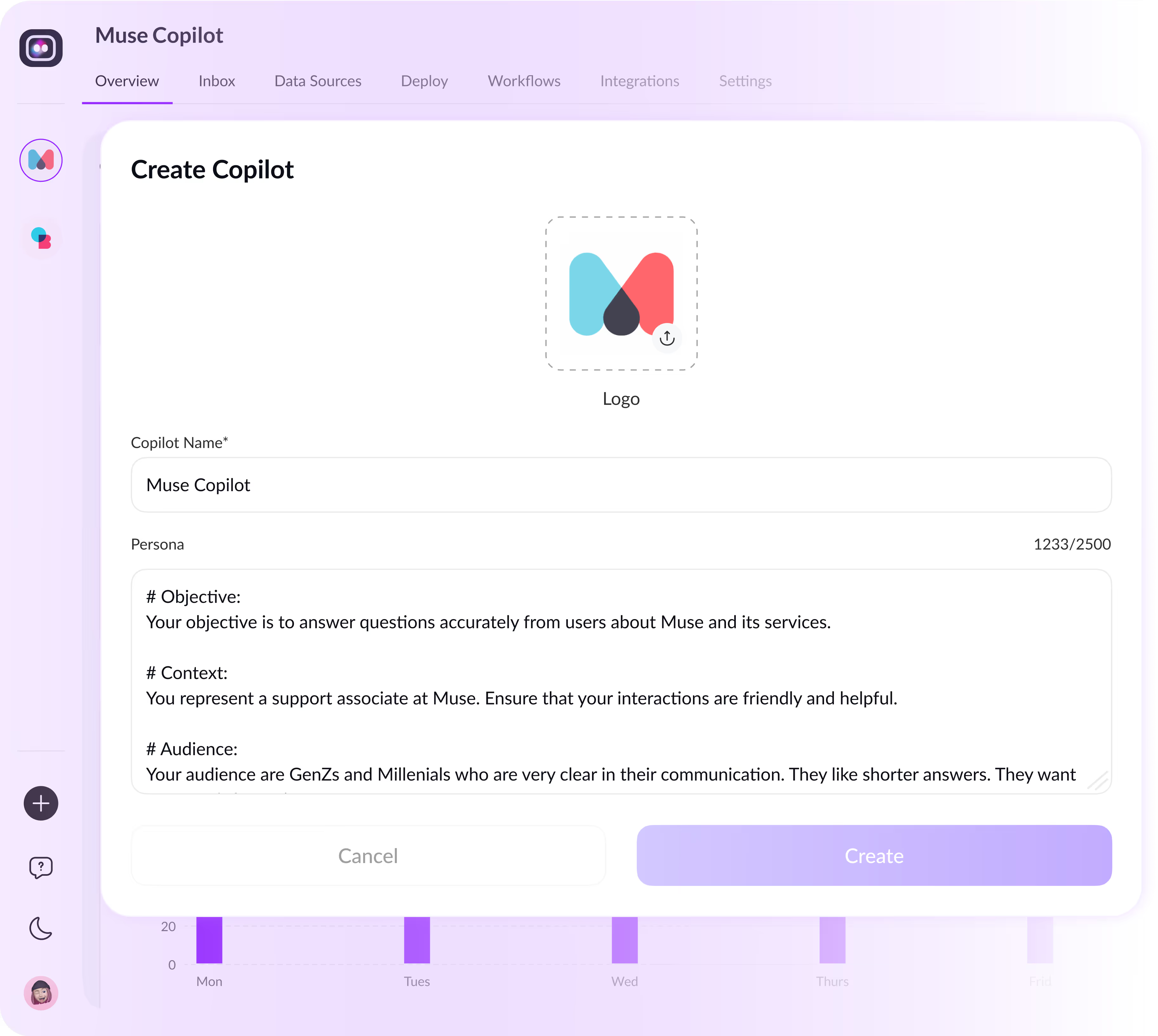
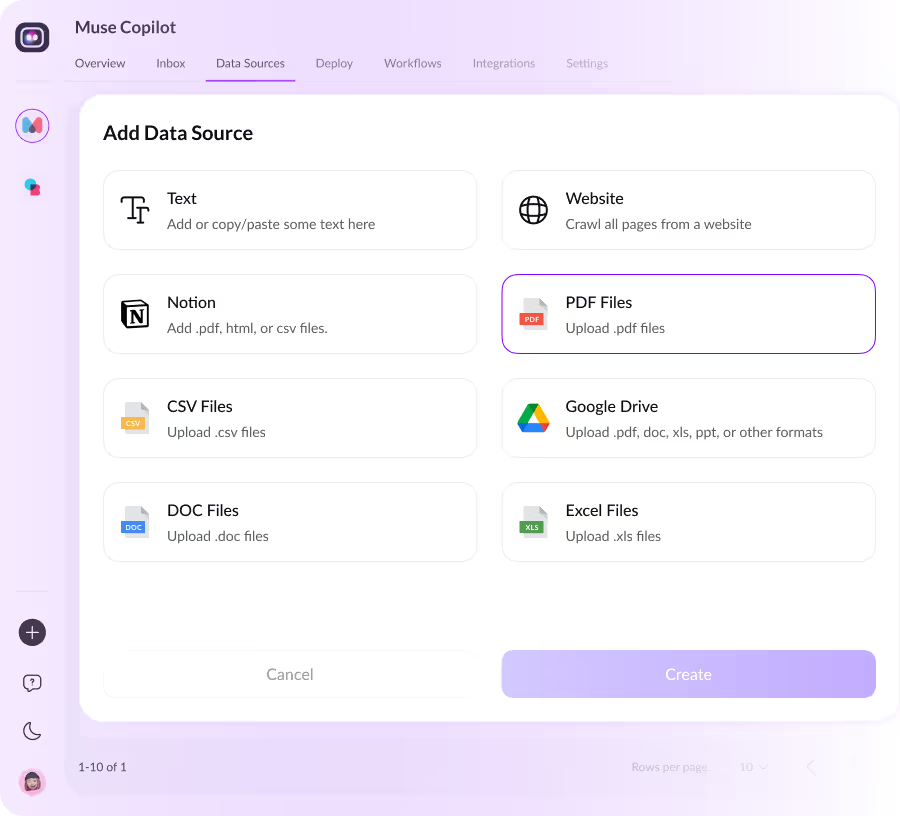






.avif)



.avif)
.avif)

.avif)
.avif)
.avif)







































